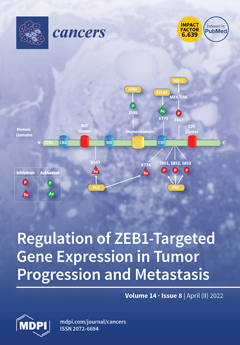This large, retrospective, single-centre study evaluated the diagnostic performance of
18F-choline positron emission tomography/contrast-enhanced computed tomography (PET/ceCT) in preoperative parathyroid adenoma detection in primary hyperparathyroidism cases after negative/inconclusive ultrasound or other imaging findings. We included patients who underwent surgery and
18F-choline
[...] Read more.
This large, retrospective, single-centre study evaluated the diagnostic performance of
18F-choline positron emission tomography/contrast-enhanced computed tomography (PET/ceCT) in preoperative parathyroid adenoma detection in primary hyperparathyroidism cases after negative/inconclusive ultrasound or other imaging findings. We included patients who underwent surgery and
18F-choline PET/ceCT for inconclusive imaging results between 2015 and 2020. We compared the
18F-choline PET/ceCT results with surgical and histopathological findings and identified the variables influencing the correlation between
18F-choline PET/ceCT and surgical findings. Of 215 enrolled patients, 269 glands (mean lesion size, 10.9 ± 8.0 mm) were analysed. There were 165 unilocular and 50 multilocular lesions; the mean preoperative calcium level was 2.18 ± 0.19 mmol/L. Among 860 estimated lesions, 219 were classified as true positive, 21 as false positive, and 28 as false negative. The per-lesion sensitivity was 88.66%; specificity, 96.57%; positive predictive value, 91.40%; and negative predictive value, 95.39%. The detection and cure rates were 82.0% and 95.0%, respectively. On univariate and multivariate analyses, the maximum standardised uptake value (SUVmax), lesion size, and unilocularity correlated with the pathologic findings of hyperfunctioning glands.
18F-choline PET/ceCT presents favourable diagnostic performance as a second-line imaging method, with SUVmax, lesion size, and unilocularity predicting a high correlation between the
18F-choline PET/ceCT and surgical findings.
Full article






